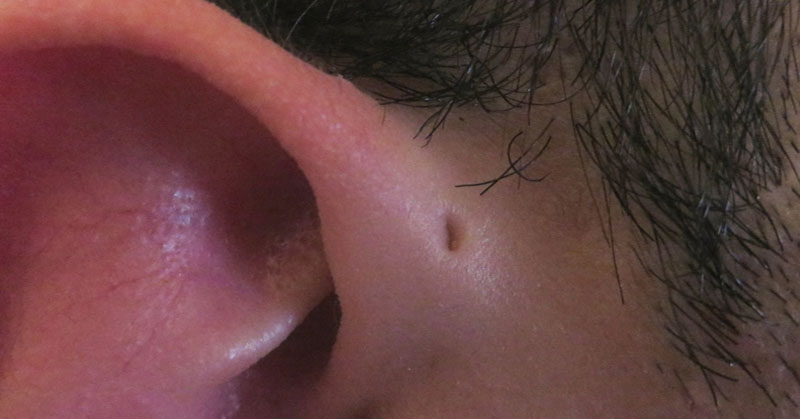If you’ve ever wished to be mermaid, there’s a chance you might have been one!
Even though all of us share similar genes and DNA, there are certain traits that make us unique. Some people have a birthmark, moles, or skin tags. Others have longer toes, some have short ones.
There’s also a small percentage of people who develop a small hole in the top front of their ear. This is called a preauricular sinus, or an ear pit.
And scientists have some very fascinating theories about it…
To see if you have a preauricular ear pit, check the area where your face meets the cartilage of your upper ear. You would see a tiny hole on the ear’s outside rim. Usually, they’re found on the ear, but up to 50 percent of people have them on both ears.
Studies show only .1 percent of people in the US have this, as well as .9 percent in the UK and 4 to 10 percent in Asia and parts of Africa. In South Korea, as much as 5 percent of people may have it.
Technically diagnosed as a birth defect, the ear pit was first documented by Van Heusinger in 1864.
But one scientist has a different theory…
According to Neil Shubin, an evolutionary biologist, the holes could be “evolutionary remnants of fish gils.” In other words, our ancestors might have lived underwater, and the hole may serve as leftover proof of this from years and years ago.
Most people who have this hole will likely forget it’s there. It usually doesn’t cause any problems, although sometimes it can become infected, or even form a cyst. If this happens, it’s best to seek medical attention. If the infection gets too serious, you may need to have your ear pit drained or even removed completely. There’s a surgery to do this.
To learn more about preauricular sinuses, or ear pits, check out the following video!
Sources:
NCBI
Business Insider
Emedicine


